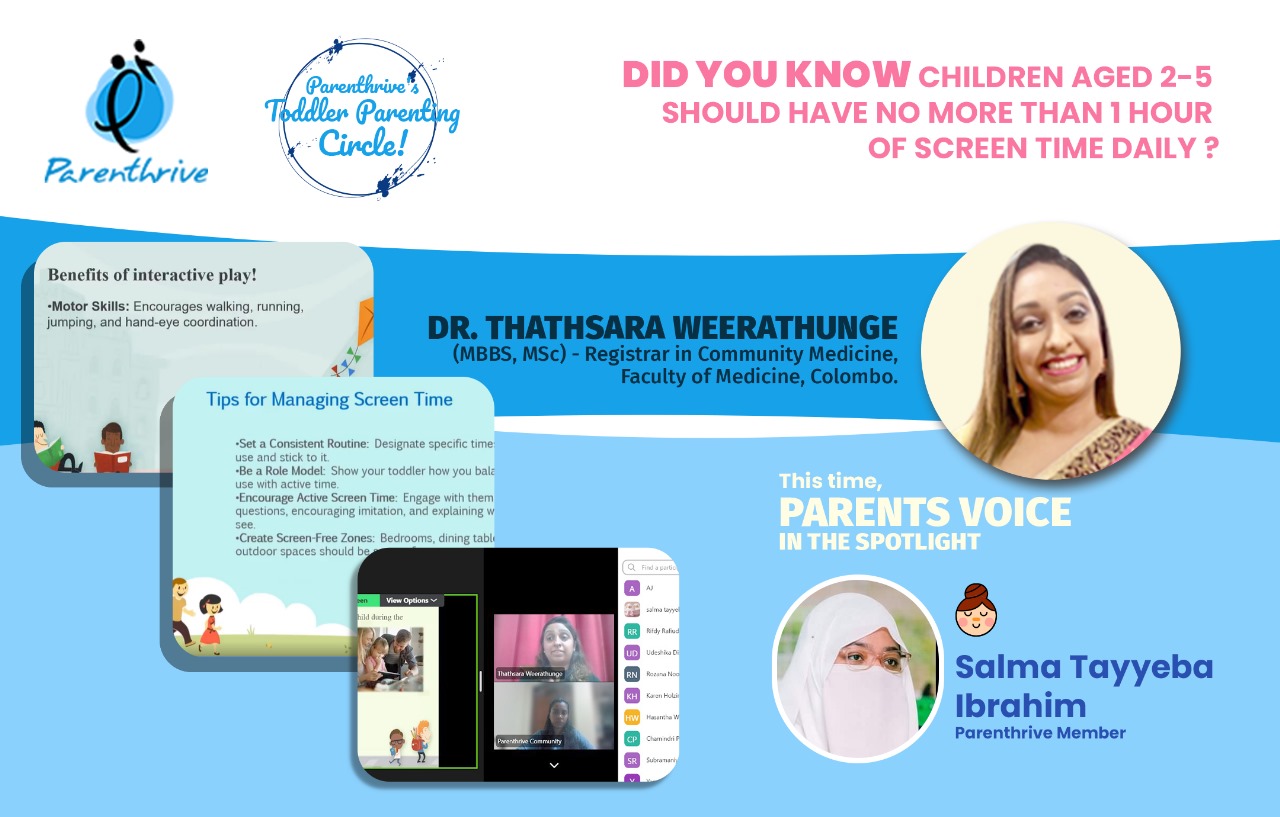
In today’s digital world, toddlers are exposed to screens from a very young age. While screens can provide educational value, it’s important to strike the right balance with interactive play to support a toddler’s overall development. Dr. Thilini Thathsara recently led a session to guide parents on how to manage this balance and create a healthy environment for their young children.
Why Balance is Important
Interactive play is crucial for a toddler’s brain development. It promotes neural growth, creativity, and problem-solving skills. Additionally, engaging in social play helps toddlers understand emotions, build empathy, and practice communication skills. Play also encourages physical activity, essential for developing motor skills and overall physical health. Excessive screen time can hinder this development by reducing opportunities for active play.
Recommended Screen Time Guidelines
Leading health organizations such as the American Academy of Pediatrics (AAP) and the World Health Organization (WHO) recommend the following:
- Under 18 months: No screen time, except for video chats.
- 18-24 months: Limited, high-quality programming with parental interaction.
- 2-5 years: Up to 1 hour of screen time per day, with co-viewing encouraged.
Choosing Quality Content
Not all screen time is equal. Dr. Thathsara highlighted how parents can select high-quality content that promotes learning. Look for interactive programs or apps that encourage problem-solving, social skills, and creativity. Avoid passive, overstimulating, or violent content. Engaging with your child during screen time is essential—ask questions, explain what’s happening, and encourage participation.
The Benefits of Interactive Play
Interactive play is vital for developing motor skills, cognitive flexibility, and social-emotional growth. Activities like building blocks, playing catch, or going on nature walks provide valuable opportunities for toddlers to learn, socialize, and move their bodies. Dr. Thathsara also suggested creative activities such as arts and crafts to further stimulate cognitive and emotional development.
Sample Daily Routine
To create a balanced day, parents can follow a simple routine:
- Morning: Start with 15 minutes of co-viewed educational screen time, followed by 30 minutes of physical play.
- Afternoon: Engage in creative play for 20-30 minutes, then allow another short session of screen time.
- Evening: End with family time or storytime, keeping screens away during this period.
Final Thoughts on Balance
A healthy mix of screen time and play supports better sleep, stronger parent-child bonds, and improved physical and emotional well-being. By being mindful of the content they consume and the time spent on screens, parents can help their toddlers grow into happy, well-rounded individuals.
Dr. Thathsara also recommended resources such as The Toddler's Busy Book for more interactive play ideas, helping parents keep their little ones engaged and learning.






